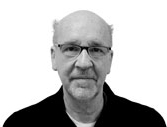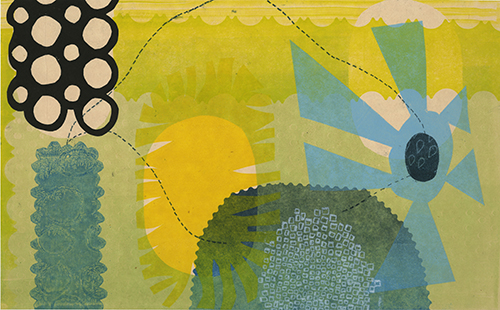
PAUL KRAINAK
LJ was not only an innovative painter, she was active as a writer for the New Art Examiner, the journal that documented the character of that decade which never had a label or an exclusive style, a lead critic or a foundational gallery. There was Marianne Deson, SP (who represented LJ), Donald Young and Rhona Hoffman and a few others but most focused on artists from New York. An exception was Nancy Lurie who was committed to locals like Hollis Sigler, Joanna Frueh, Janet Cooling, Nicolas Africano, etc.
LJ was younger than most of the Lurie stable, but for emerging artists the gallery was a model of independence and courage, confirming that Chicago’s appetite for alteriority had legs beyond the Imagists School.
LJ was from Pennsylvania where she studied at the Philadelphia College of Art. She also worked for a time in the theater fabricating costumes where she absorbed the culture of sound and display. She finished her education at the School of the Art Institute and adapted quickly to Chicago’s temper and wide-open environment. LJ began producing paintings that fell through the wormholes of conceptualism and the cracks of late modern critique. Her painting was both fleshy and psychological, with shadowy spirits that were part memory, part desire. She embodied the restive spirit of her work as did many of her peers who were artists, writers and musicians like Larry Miller, Deven Golden, Mike Zieve, Steven Reynolds, Jim Yood, Suzie Kunz, and Gary Justis. Their work felt like the Chicago where the intellectual, architect, jazz musician, social worker and laborer found common ground. This metropolis of Irish, Eastern Europeans, African Americans and southern migrants anticipated the expressionist and architectural legacy that flourished in the School of the Art Institute, the University of Chicago and the Illinois Institute of Technology. The trifecta of expressionism, imagism, and design all brimming with object-love, materialized in the late ’80s as the only viable response to coastal culture, right off of State and Hubbard.
Later LJ came to teach at Illinois State and crafted different images that were more intimate and vivid. Most of her work is now devoted to monotypes and artist books. She forfeited the figure and narrative space, instead producing reflexive shapes that fill compositions with bountiful encryption. She talks about circling in on “the body, botany, micro- and macrocosms, maps, patterns, forms, color and the interpretation of musical themes….”
In soil tended with floral and vegetal pattern, forms circulate between the press and the garden. Here LJ pollinates the sterile, disinterested subplot of abstraction.

“Blue Scent,” 2018, LJ Douglas

2 comments for “Inland Art | LJ Douglas”